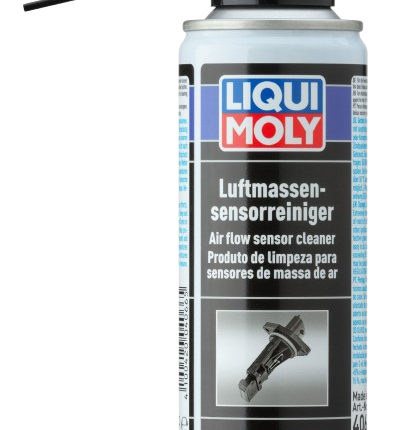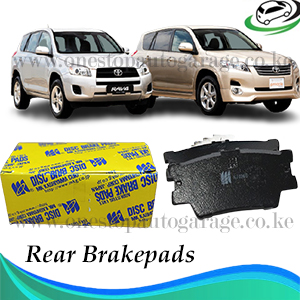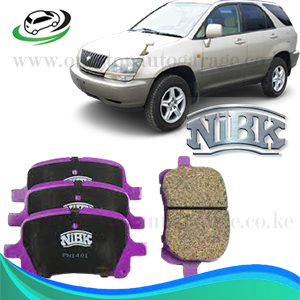-13%
Get Toyota Harrier MCU1# Front Brake Pad
Brake shoes are a crucial component of drum brake systems, commonly found in older vehicles and some modern ones, particularly on the rear wheels. Here are the key benefits of brake shoes:
Benefits;
- Durability and Longevity: Brake shoes typically have a longer lifespan compared to brake pads in disc brake systems. They are less exposed to the elements, which helps reduce wear and tear.
- Effective in Heavy Duty Applications: Drum brakes with brake shoes can provide better performance in heavy-duty applications, such as trucks and buses, due to their larger friction surface area.
- Cost-Effective: Brake shoes and drum brake systems are generally more cost-effective to manufacture and replace compared to disc brake systems. This can result in lower maintenance costs over the vehicle’s lifespan.
- Strong Stopping Power: Drum brakes can generate a significant amount of stopping force, which is why they are often used in vehicles that require strong braking power.
- Self-Energizing Effect: Brake shoes can use the rotational force of the drum to enhance braking power, a phenomenon known as the self-energizing effect. This reduces the effort required by the driver to apply the brakes.
- Resistance to Debris: Drum brakes are less exposed to road debris and dirt, which can help maintain consistent performance over time.
Signs a Car Needs New Brake Shoes
Recognizing the signs that your car needs new brake shoes is essential for maintaining safe and effective braking performance. Here are the key indicators:
- Squealing or Scraping Noises: Unusual noises when braking, such as squealing, grinding, or scraping, often indicate that the brake shoes are worn out. These noises occur when the friction material is worn down and the metal components make contact.
- Reduced Braking Performance: If you notice that your car takes longer to stop or the brakes feel less responsive, it may be due to worn brake shoes. This can be especially noticeable when carrying heavy loads or driving downhill.
- Brake Warning Light: Many modern vehicles are equipped with a brake warning light on the dashboard. If this light comes on, it’s a clear indication that there may be an issue with the brake system, including the brake shoes.
- Vibrations or Pulsations: If you feel vibrations or pulsations in the brake pedal when applying the brakes, it could be a sign of unevenly worn brake shoes or a damaged brake drum.
- Spongy Brake Pedal: A brake pedal that feels spongy or goes down further than usual before the brakes engage can indicate that the brake shoes are worn out and need replacement.
- Parking Brake Issues: Difficulty in engaging or disengaging the parking brake or noticing that it doesn’t hold the car in place as effectively can be a sign of worn brake shoes.
- Visible Wear: If you perform a visual inspection and notice that the brake shoes have less than 3mm of friction material remaining, it’s time to replace them. Some brake shoes have wear indicators that make this easier to determine.
- Burning Smell: A burning smell from the wheels after driving can indicate that the brake shoes are overheated and possibly worn out, especially if you’ve been driving in stop-and-go traffic or down a long hill.
Importance of Timely Replacement
Timely replacement of brake shoes is critical for several reasons:
- Safety: Worn brake shoes can significantly reduce braking efficiency, increasing stopping distances and the risk of accidents.
- Cost Savings: Replacing brake shoes before they are completely worn out can prevent damage to other brake components, such as the brake drum, which can be more expensive to repair or replace.
- Consistent Performance: Regular maintenance and timely replacement of brake shoes ensure that your vehicle’s braking system performs optimally, providing reliable stopping power when needed.
Follow us on Facebook for more parts.



